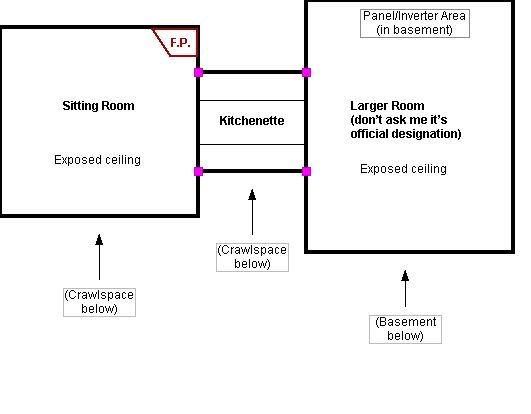- Location
- Windsor, CO NEC: 2017
- Occupation
- Service Manager
I was recently approached by someone looking for answers on a project he is working on. I offered the best answer to a particular problem I could think of (along with a couple lesser answers, IMO), but never really felt like I had the perfect solution to the problem. I'm hoping for some experience to fill in the gaps on this.
Imagine a crawlspace concrete wall, with holes drilled in it prior to framing. The person (doing their own work on a properly permitted job) then began framing, and the holes were below the joists. So, in order to go from one side of the concrete wall to the other, it would be necessary to drop below the joist level, penetrate the wall, and return to joist level and continue the run.
My solution was to ram-set some 2x4s to the wall, and use them as a chase for wiring. I figured conduit runs would not be especially productive, because the panel is located some distance from the walls in question, and it would be necessary to pull all at once and have a good guess at the length before doing so.

Any better ideas?
Imagine a crawlspace concrete wall, with holes drilled in it prior to framing. The person (doing their own work on a properly permitted job) then began framing, and the holes were below the joists. So, in order to go from one side of the concrete wall to the other, it would be necessary to drop below the joist level, penetrate the wall, and return to joist level and continue the run.
My solution was to ram-set some 2x4s to the wall, and use them as a chase for wiring. I figured conduit runs would not be especially productive, because the panel is located some distance from the walls in question, and it would be necessary to pull all at once and have a good guess at the length before doing so.

Any better ideas?
Last edited:




